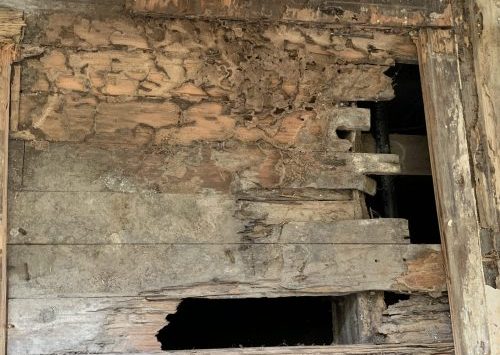There’s a certain romance to restoring an old house. Visions of breathing new life into a piece of history, uncovering hidden architectural details, and crafting a unique, character-filled home dance in the minds of prospective owners. But the reality, while rewarding, is often a complex and challenging journey. Before diving headfirst into plaster dust and demolition, it’s crucial to understand the potential issues that lie beneath the surface.
Restoring an old house is far more than just a cosmetic makeover. It’s a delicate dance between preservation, modernization, and problem-solving. While the charm is undeniable, the challenges can be significant, potentially impacting your budget, timeline, and sanity.
Unearthing Hidden Problems:
One of the biggest issues with old house restoration is the uncertainty. Unlike building new, you’re often inheriting problems concealed by years of neglect or poorly executed renovations. Common culprits include:
- Structural Issues: Rotting beams, foundation cracks, and sagging floors can be costly and time-consuming to repair. Hidden termite or pest damage can further exacerbate these problems.
- Outdated Wiring and Plumbing: Knob-and-tube wiring, lead pipes, and inadequate electrical panels are not only inefficient but also pose serious safety hazards. Rewiring and replumbing can be a major undertaking.
- Asbestos and Lead Paint: These hazardous materials were common in older homes and require professional abatement, adding significantly to the overall cost.
- Moisture and Dampness: Poor ventilation, leaky roofs, and inadequate drainage can lead to mold growth, wood rot, and structural damage. Identifying and addressing the source of the moisture is paramount.
- Non-Code Compliant Systems: Older homes often predate current building codes, requiring updates to meet safety and accessibility standards.
The Cost Factor: More Than Meets the Eye:
The expense of restoring an old house is almost always underestimated. Beyond the obvious costs of new materials and labor, consider:
- Unforeseen Repairs: As you peel back layers, you’re likely to uncover hidden problems that were not accounted for in the initial budget.
- Specialized Labor: Restoring original features, such as intricate moldings or stained glass, often requires skilled artisans who command higher rates.
- Period-Appropriate Materials: Sourcing authentic or period-appropriate materials can be expensive and time-consuming.
- Permits and Inspections: Bringing an old house up to code requires navigating a complex web of permits and inspections.
- Living Expenses: Depending on the scale of the project, you may need to factor in the cost of temporary housing while the renovation is underway.
Navigating Historical Considerations:
Restoring a historically significant home often comes with additional challenges:
- Preservation Restrictions: Historic districts and landmarks may have strict guidelines regarding exterior alterations and original feature preservation.
- Research and Documentation: Understanding the home’s history and architectural style is crucial for making informed decisions about restoration choices.
- Authenticity vs. Modernity: Balancing the desire to preserve the home’s original character with the need for modern amenities can be a delicate balancing act.
The Timeline Tango: Prepare for Delays:
Restoration projects notoriously take longer than anticipated. Factors that can impact the timeline include:
- Unforeseen Problems: As mentioned earlier, hidden issues can significantly delay the project.
- Sourcing Materials: Finding specific or rare materials can take time.
- Permit Approval: Obtaining necessary permits can be a lengthy process.
- Contractor Availability: Hiring qualified contractors experienced in old house restoration can be challenging, leading to scheduling delays.
So, Is It Worth It?
Despite the challenges, restoring an old house can be an incredibly rewarding experience. The opportunity to preserve a piece of history, create a unique and character-filled home, and contribute to the revitalization of a neighborhood is undeniably appealing.
However, success hinges on careful planning, realistic budgeting, and a healthy dose of patience. Before embarking on this journey, thoroughly research the property, consult with experienced professionals, and be prepared for the unexpected.
Ultimately, restoring an old house is a labor of love. It requires dedication, resilience, and a deep appreciation for the past. But for those willing to embrace the challenges, the rewards – a truly one-of-a-kind home and the satisfaction of saving a piece of history – are immeasurable.
